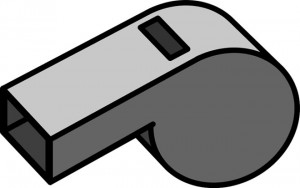Kazoo
Cut a piece of tissue paper the same length as a plastic comb (make sure the comb’s teeth are close together). Fold the tissue paper in half, wrapping it around the teeth of the comb. Place it lightly between your lips and hummm… you’ll feel an odd vibrational effect on your lips as your kazoo makes a sound! You can try different papers, including waxed paper, parchment, tracing paper, and more!
Poppers
Cut the neck off a small balloon (balloons made for water bombs work well) and stretch it over the opening of a film canister. Pinch the drum head and pull up before you release – POP! You can change the pitch by adjusting the stretch of the drum head.
Please login or register to read the rest of this content.


We are also confused about the can and the bobby pins. Can you put up a picture or video to show what it is supposed to look like? Also, are there supposed to be three or four clothes pins altogether?
I totally should have made a video for this – I am sorry! Maybe I’ll add it to my video shoot list. I have about 50 videos right now we’re working on and perhaps I can stick it on the list. To answer your question, though, no you don’t grab it with your teeth – just loosely hold it there with your lips – very loosely.
the kazoo experiment did not work, are you supposed to wrap the tissue paper in between the teeth of the comb?
You’re going for something like this: http://img-aws.ehowcdn.com/640/cme/photography.prod.demandstudios.com/af225342-6fe7-4cda-8bac-4cb102c35510.jpg and then play it!
The instructions for the kazoo were very vague. Did you mean to take the tissue paper and weave it in and out? And how are you supposed to have a length of tissue paper just as long as the comb wrapped around the whole way if it’s folded in half? HELP!
For Popper experiment, add water to the canister for a new sound! Shake the canister to coat the balloon with water then pull the balloon for the pop. Keep pulling for a different sound each time it is popped. The sound changes as the water is shaken off. My boys’ favorite sound is when the balloon is stretched the tightest over the canister without water coating the inside.
Not sure what we did wrong with the tissue paper and comb, but we made a nice kazoo sound without the comb. We curved wax paper lightly against our lips and hummed a song.
Thanks! 🙂
There’s a lot that goes into an MP3 player, including electronics, software, and more… but if you’re interested in computer technology, check out Unit 14.
how do you make a mp3 player
Hi MIranda,
Sorry for the confusion! That’s why nearly all our experiments have videos. I am not sure why this one was skipped, so let me see if I can help. Yes, you spread the clothespins out equally around the rim of the soup can. You’re basically clamping the bobby pin to the side of the soup can so that when you pluck the bobby pin, the vibrations are transferred and amplified by the can.
What is the bobby pin strummer supposed to look like? The directions are confusing! When you say “add three clothespins” Where are the three clothespins that are 120 degrees apart supposed to be? sticking up against the can under the rubber band, or downwards under the can?? around the rim of the can? Do I turn the open end of the can upside own to stand on the bobby pins or the clothespins?
Help!!
Miranda
I really like these experiments!
-Charli (7th grader)
When you fill a bottle with water, the space above the bottle is a tube of air. When you smack the bottle with a fork (or blow across the top), it makes the bottle vibrate. The longer this tube of air (the emptier the bottle), the slower the vibration and the lower and deeper the sound.
When you fill the bottle and hit the side, you’re getting the sound of the container itself, which is going to change depending on how full your bottle is. The larger the container (which is bottle + water), the deeper the sound.
In the first case, you’re getting the vibration from the air. In the second, you’re getting it from the object itself. Does that help?
My son completed the Mystery Pitch Experiment. Can you explain the reason for the change in pitch?
Sharon